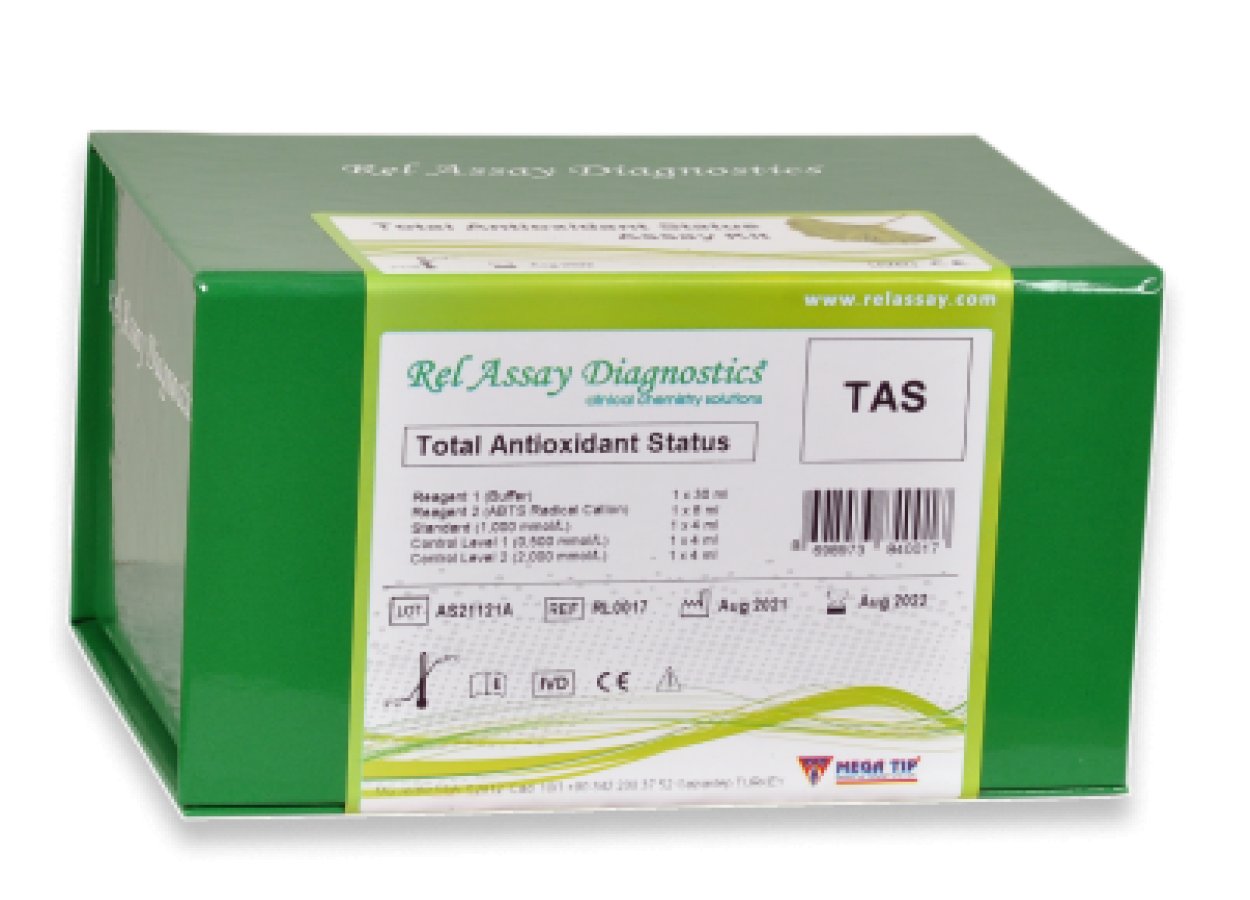
| Reagent 1 - Buffer | 1 x 30 ml |
| Reagent 2 - Prochromogen | 1 x 8 ml |
| Standard | 1 x 4 ml |
| Quality Control - Level 1 | 1 x 4 ml |
| Quality Control - Level 2 | 1 x 4 ml |
Reactive oxygen species (ROS) is produced in metabolic and physiological processes, and harmful oxidative reactions may occur in organisms that remove them via enzymatic and nonenzymatic antioxidative mechanisms. Under certain conditions, the increase in oxidants and decrease in antioxidants cannot be prevented, and the oxidative or in over 100 disorders, develops .
Reactive oxygen and nitrogen species are produced in metabolic and physiological processes, and harmful oxidative reactions may occur in organisms that remove them via enzymatic and non-enzymatic antioxidative mechanisms. Under certain conditions, the increase in oxidants and decrease in antioxidants cannot be prevented, and the oxidative or in over 100 disorders, develops. Serum (or plasma) concentrations of different oxidant species can be measured in laboratories separately, but the measurements are time-consuming, labor-intensive and costly and require complicated techniques. Since the measurement of different oxidant molecules separately is not practical and their oxidant effects are additive, the total oxidant status (TOS) of a sample is measured and this is named total peroxide (TP) , serum oxidation activity (SOA) , reactive oxygen metabolites (ROM) or some other synonyms.
In the test, oxidants present in the sample oxidize the ferrous ion– chelator complex to ferric ion. The oxidation reaction is prolonged by enhancer molecules, which are abundantly present in the reaction medium. The ferric ion makes a colored complex with chromogen in an acidic medium. The color intensity, which can be measured spectrophotometrically, is related to the total amount of oxidant molecules present in the sample. The assay is calibrated with hydrogen peroxide and the results are expressed in terms of micromolar hydrogen peroxide equivalent per liter (μmol H2O2 Equiv./L) .
| Reagent 1 - Buffer | 1 x 30 ml |
| Reagent 2 - Prochromogen | 1 x 8 ml |
| Standard | 1 x 4 ml |
| Quality Control - Level 1 | 1 x 4 ml |
| Quality Control - Level 2 | 1 x 4 ml |
1. Halliwell B, Gutteridge JMC.
Free radicals in biology and medicine. Third ed. Oxford: Oxford Science
Publications; 2000. p. 617–24.
2.Tarpey MM, Wink DA, Grisham MB.
Methods for detection of reactive metabolites of oxygen and nitrogen: in vitro
and in vivo considerations. Am J Physiol, Regul Integr Comp Physiol
2004;286(3):R431–44.
3.Yeni E, Gulum M, Selek S, et al.
Comparison of oxidative/antioxidative status of penil corpus cavernosum blood
and peripheral venous blood. Int J Impot Res 2005;17(1):19–22.
4.Yanik M, Erel O, Kati M. The
relationship between potency of oxidative stress and severity of depression.
Acta Neuropsychiatr 2004;16(4):200–3.
5.Harma M, Harma M, Erel O.
Increased oxidative stress in patients with hydatiform mole. Swiss Med Wkly
2003;133(41–42):563–6.
6. Nakamura K, Endo H, Kashiwazaki
S. Serum oxidation activities and rheumatoid arthritis. Int J Tissue React
1897;9(4):307–16.
7. Ceylan E, Gulsun A, Gencer M,
Aksoy N. A new parameter in the detection of tuberculosis activity: reactive
oxygen metabolites. Respiration 2005;72(2):156–9.
8. Erel O. A new automated
colorimetric method for measuring total oxidant status. Clin Biochem. 2005
Dec;38(12):1103-11.
© Copyright 2020. All Rights Reserved.
Gaziantep Web Tasarım